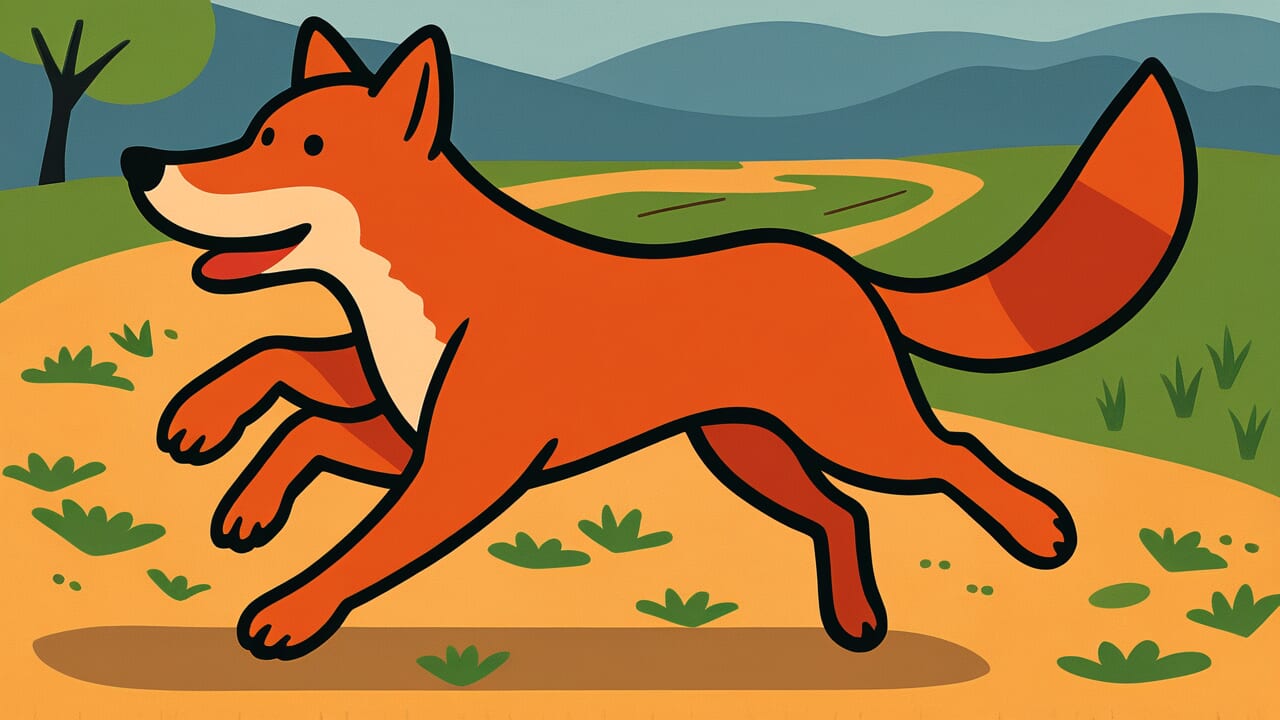How to Read “A red dog chases a fox”
Akainu ga kitsune wo ou
Meaning of “A red dog chases a fox”
“A red dog chases a fox” means it’s hard to tell good from bad or better from worse. This comes from the fact that red dogs and foxes look very similar.
This proverb teaches us that we can’t judge what’s truly valuable or right just by looking at the surface. Red-haired dogs and red-haired foxes look alike, but they’re completely different inside.
People use this saying when it’s hard to tell good people from bad people. It also fits when you can’t tell quality items from poor ones. Or when you’re confused about choosing the right path.
Today, this proverb reminds us to be careful. We live in a world full of information. We need to look deeper than just appearances to find the truth.
The saying teaches us to observe carefully and think deeply before making judgments.
Origin and Etymology
There are no clear written records about where this proverb came from. But we can learn interesting things by looking at the words themselves.
A red dog is a dog with reddish fur. Some Japanese dogs, like Shiba Inus, have red fur. People in Japan have loved these dogs for a long time.
Foxes also have reddish-brown fur. When you see both animals from far away or in dim light, they look very similar.
This proverb probably came from hunting scenes. Dogs have worked with humans as hunting partners since ancient times. Imagine a red dog chasing a red fox.
The hunter and the hunted are enemies. But they look surprisingly similar on the outside. This visual similarity created an important lesson.
The proverb teaches that you can’t judge important differences like good versus bad just by looking. Japanese people have always valued the ability to see the true nature of things.
This saying expresses that wisdom through the image of animals.
Usage Examples
- These two candidates have similar policies. It’s like a red dog chasing a fox – I can’t decide which one to choose.
- Just listening to their words, it’s hard to know who to trust. It’s like a red dog chasing a fox.
Universal Wisdom
People have passed down “A red dog chases a fox” because humans have always struggled with “seeing clearly.” Telling things apart has never been easy.
We humans are visual creatures. First impressions, appearances, and surface behaviors strongly influence us. But what’s inside doesn’t always show on the outside.
Someone who looks kind might have bad intentions. Someone who seems rough might hide deep kindness. This contradiction makes human society complex and life difficult.
This proverb teaches us not to rush our judgments. Red dogs and foxes may look similar, but one is a human’s friend and the other needs caution.
To see the difference, you need time to observe. You need to understand beyond the surface.
Our ancestors shared this truth through animal images. They knew that everyone can make wrong judgments. And sometimes those mistakes lead to terrible results.
Don’t be fooled by similar appearances. Develop the power to see what’s truly inside. This challenge exists in every time period. That’s why this proverb still speaks to our hearts today.
When AI Hears This
A brightly colored tracker creates what game theory calls a “commitment problem.” The red dog’s actions are always visible to the fox. The tracker can’t hide its next move, creating a huge information gap.
What’s interesting is that when the tracker has less information, “predictability” becomes its only weapon. The fox can see the red dog’s movements and predict where to escape.
But when something is too predictable, the fox’s choices become limited too. Chess AI research shows this. When the opponent’s strategy is completely visible, the runner can only go where the chaser isn’t.
This makes behavior patterns narrow down. The same thing happens in cybersecurity. Attackers can see the defense system – where firewalls are and where cameras watch.
So they try to find gaps. But defenders can use “predictable placement” on purpose. This guides attackers into certain paths where traps wait.
The red dog’s red color isn’t a weakness. It can actually work as a “strategic trap using transparency.” The key is whether the tracker can turn its information disadvantage into an advantage.
Lessons for Today
This proverb teaches you “the courage to wait” and “the wisdom to observe.”
We live in a time that demands quick decisions. On social media, we judge “like” or “skip” in an instant. In business, fast decisions get praised.
But the most important decisions need time.
When judging people, do you decide based only on first impressions? When choosing products, do you get attracted only by beautiful packaging? When believing information, do you judge only by exciting headlines?
Like red dogs and foxes, many things look the same on the surface.
But you have the power to see clearly. Stop for a moment and observe carefully. Take time and look from different angles. Then you’ll see what’s truly inside.
Using this wisdom in daily life helps you make choices with fewer regrets. Don’t rush. Don’t panic. Look carefully and think deeply.
That’s the gentle but powerful message this proverb gives to you living in modern times.



Comments